Medellín: Stepping out of the shadows
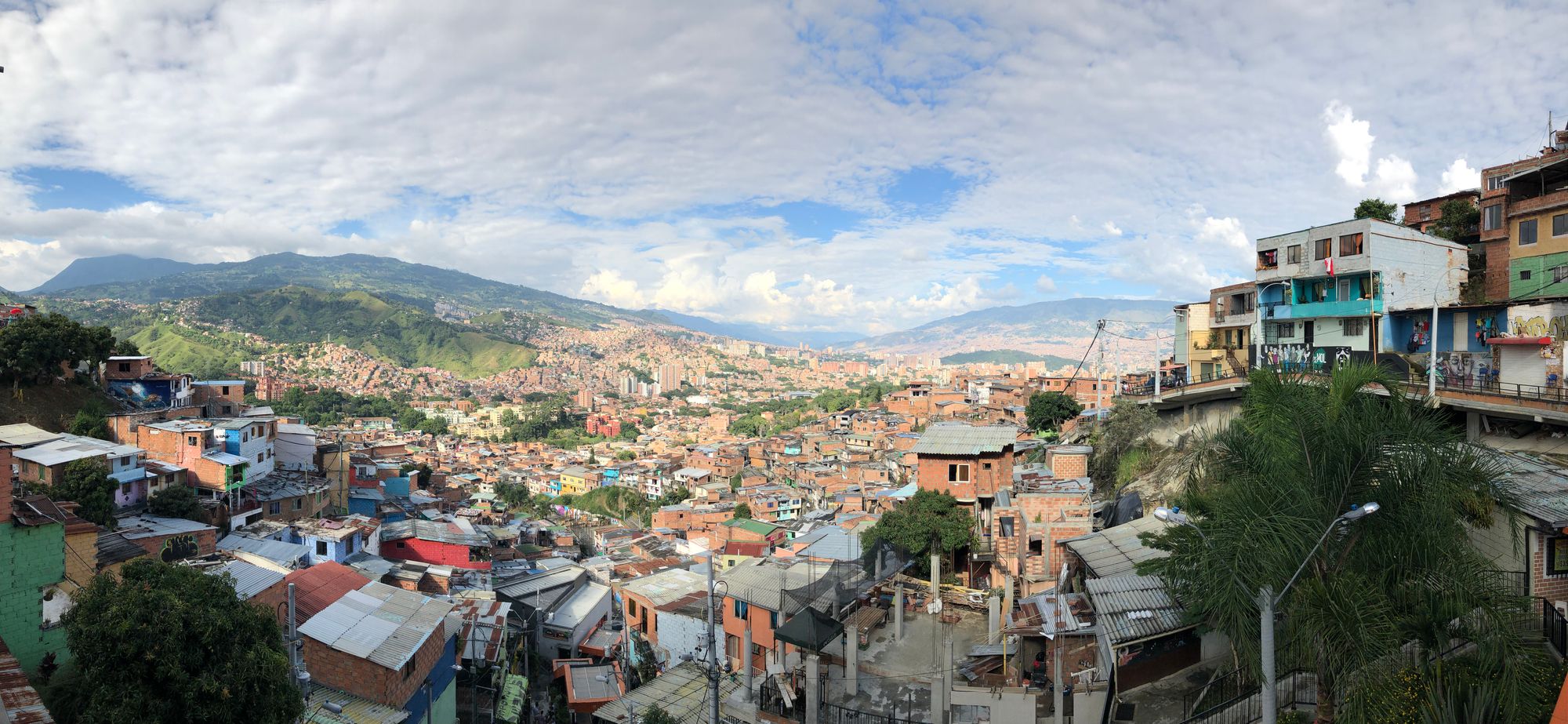
"I remember seeing dead people, bodies in the streets. Sometimes, the bodies were booby-trapped. So when the police went to pick the body up, a grenade went off in their face."
We were gathered on the patio of a simple brick house, listening to our guide, Laura, speak about her childhood here in Comuna 13. Laid out below us was Medellín, a city of 2.5 million people squeezed into the narrow Aburrá Valley. Back in the late 1980s and early '90s this was one of the most dangerous cities in the world, a place where Pablo Escobar's notorious Medellín cartel gunned down police in the streets, and where the Colombian government waged a dirty war against left-wing guerrilla groups that controlled entire city neighbourhoods.
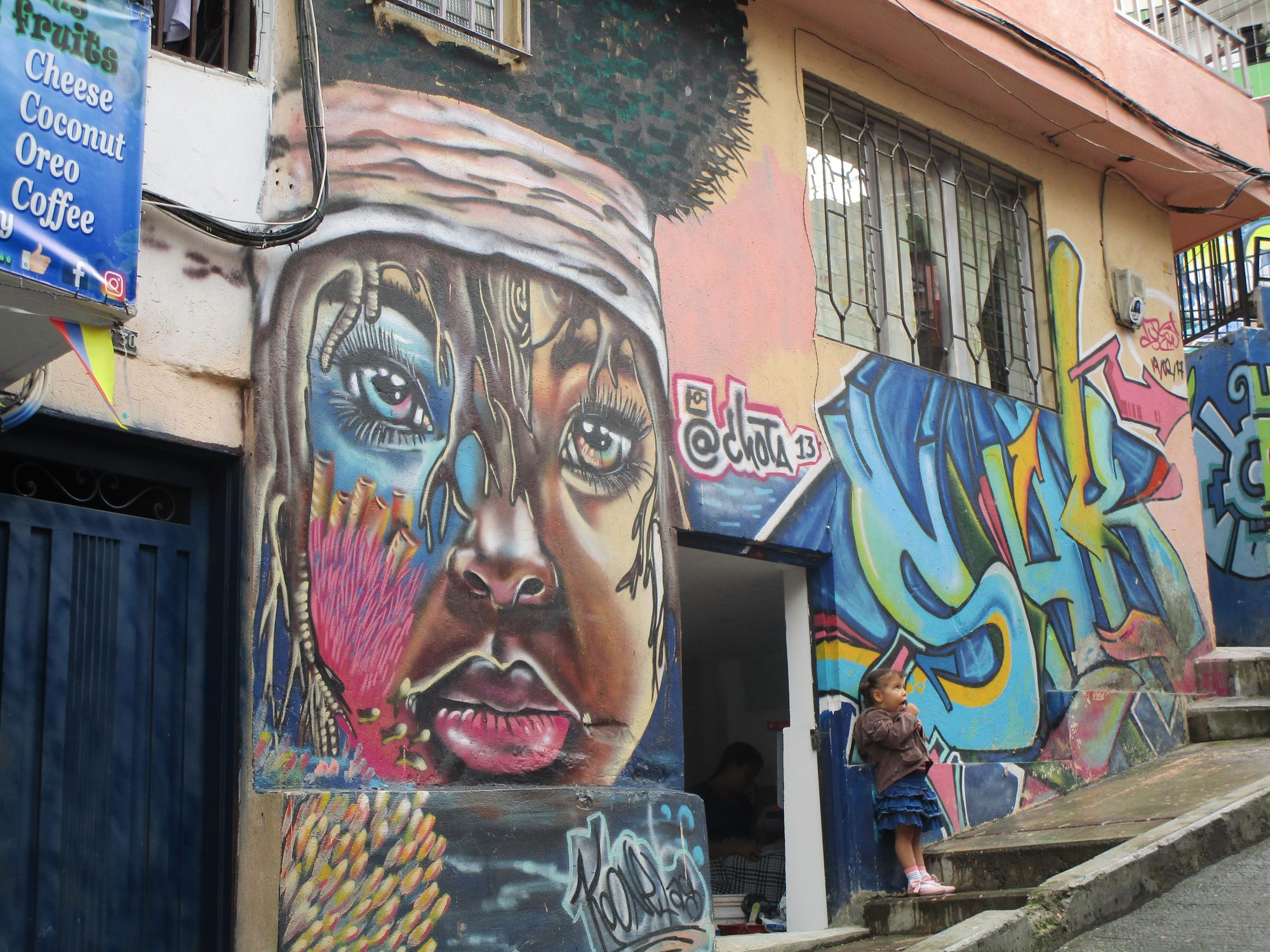
We'd decided against taking one of the many Escobar-themed tours on offer, and instead opted to join a walking tour of Comuna 13. Once considered the most dangerous barrio in the city, Comuna 13 is now one of Medellín's most popular destinations for tourists.
When we visited Brazil earlier in our trip we'd avoided the favela tours, partly for safety reasons and partly because we felt uneasy about the idea of treating poor communities as a tourist attraction. The Comuna 13 tours seemed like a more worthy enterprise, led by locals who grew up in the neighbourhood, but I was a little taken aback by the sheer number of different tour groups crowding the streets. I found myself wondering why we were all here. Was it to learn about an inspiring story of urban renewal, or was it for the thrill of being somewhere with a frisson of danger?
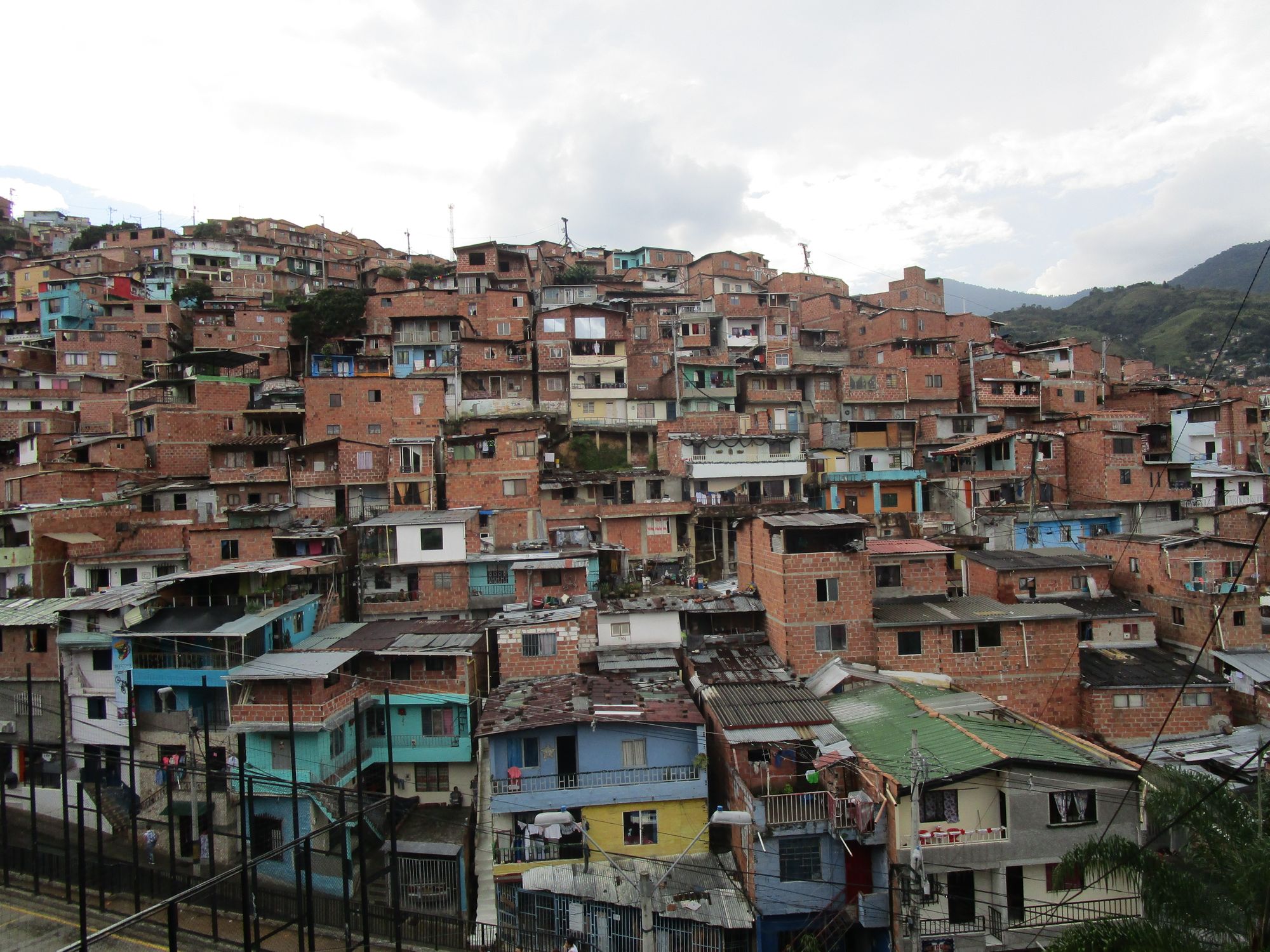
"I used to be ashamed to tell people I lived in Comuna 13," Laura continued. "But now I'm proud to say I'm from here. I'm proud of this community and what we've achieved."
Comuna 13 fell under the sway of left-wing guerrillas in the late 1980s, as groups like the FARC (Revolutionary Armed Forces of Colombia) and the ELN (National Liberation Army) vied for control of this strategically important route into the city. Throughout the '90s the level of violence ratcheted up, as right-wing paramilitaries tried to force the guerrillas out of Medellín. Things came to a head in 2002, when the Colombian government launched Operation Orion, a full-scale assault on the neighbourhood involving more than 1,000 soldiers and police officers, supported by armed helicopters.
The operation drove the guerrillas out of Comuna 13, but many civilians were caught in the crossfire. After the guerrillas moved out, the paramilitaries moved in. Some 150 residents, maybe as many as 300, were 'disappeared' in the aftermath, including people that Laura had grown up with. Locals suspected of cooperating with the guerrillas were abducted, executed and buried in mass graves on a nearby hillside. Truth and reconciliation is still an ongoing process here; most of the disappeared remain unaccounted for.
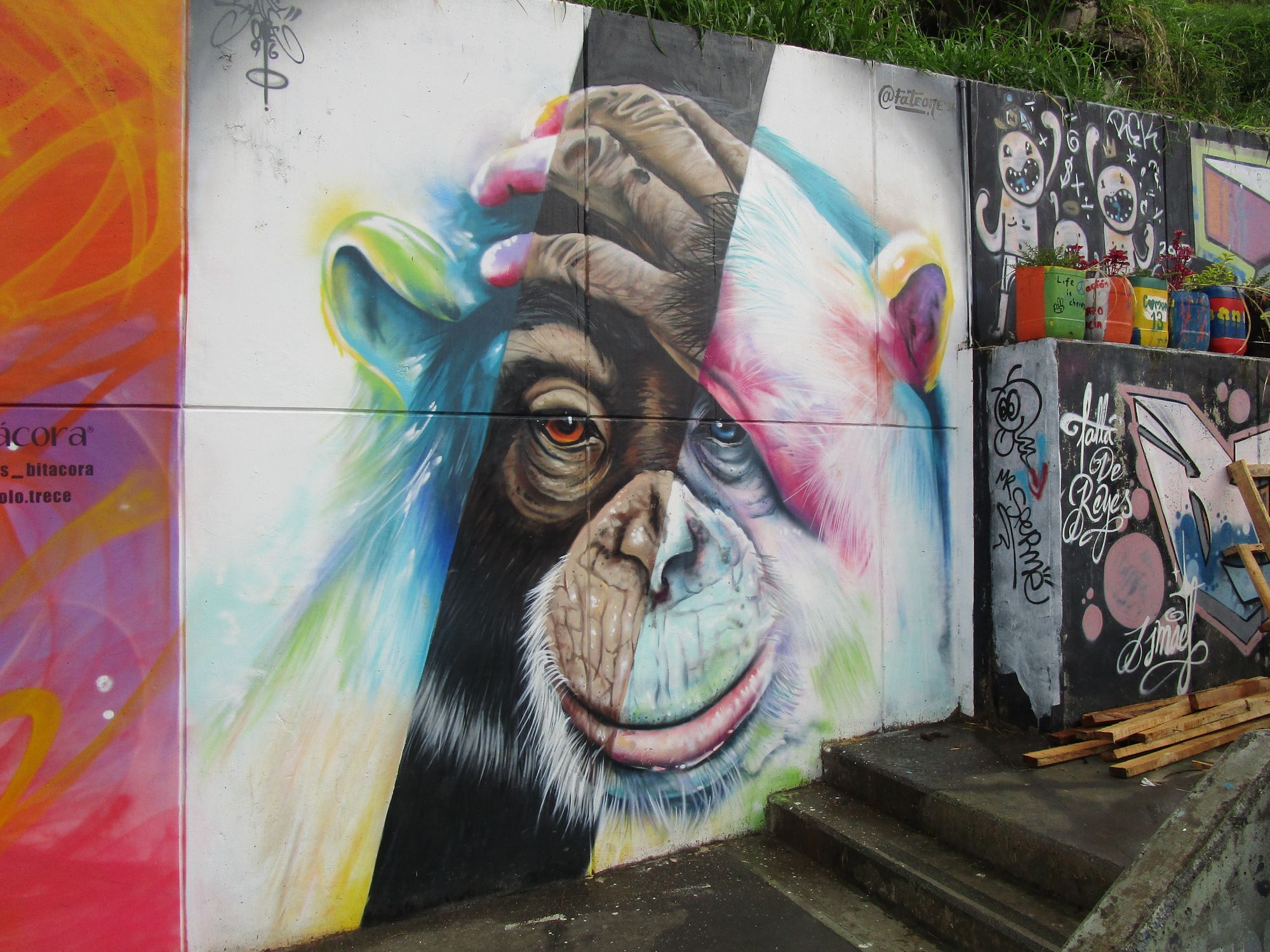
A lot has changed since those dark days, with millions of pesos invested in projects to improve the neighbourhood. A shiny new cable car now connects Comuna 13 with the rest of the city, and a series of escalators ascend the steep mountainside on which the neighbourhood is built. Comuna 13 has also become known for its street art, plastered with murals that grapple with the area's violent past and express hope for a brighter future.
As Laura recounted her story, we came to appreciate how remarkable it must be for the locals to see their neighbourhood full of tourists. Everyone here was touched by the violence in some way, and there was a palpable sense of a community trying to ensure that those days never return. The tour took us to cafés, shops and galleries where tourist dollars are helping the local economy, and we encountered welcoming smiles everywhere we went.
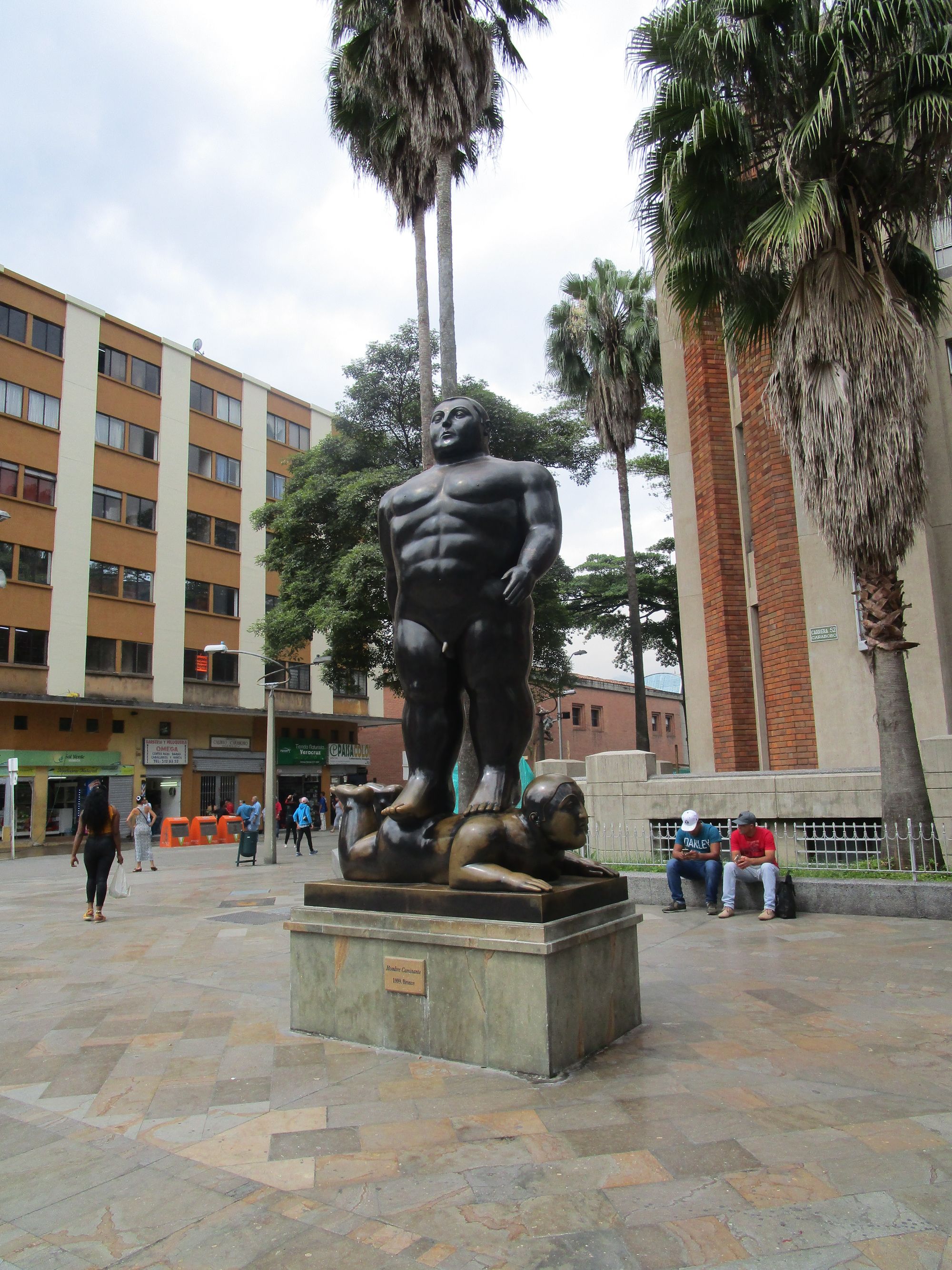
Medellín is a remarkable place when you consider where it's come from, and today it feels like a vibrant and optimistic city. Medellín's most famous son (apart from you-know-who) is the artist Fernando Botero, renowned for his unflattering portraits that accentuate the proportions of his subjects. The eponymous Plaza Botero, an outdoor museum of his distinctive sculptures in the heart of the city, was full of tourists posing for selfies when we visited on a sunny Saturday morning.
A short walk away, the pedestrianised Avenida Carabobo was thronged with shoppers perusing the endless stalls selling knock-off sportswear and designer goods, while the handicrafts market outside the cathedral was doing a roaring trade in Christmas tat. Like pretty much every big city in South America, the downtown area has its grimey side, but it felt much safer than Rio or Lima, which is pretty amazing when you consider that it was still well and truly off the tourist trail just a decade ago.
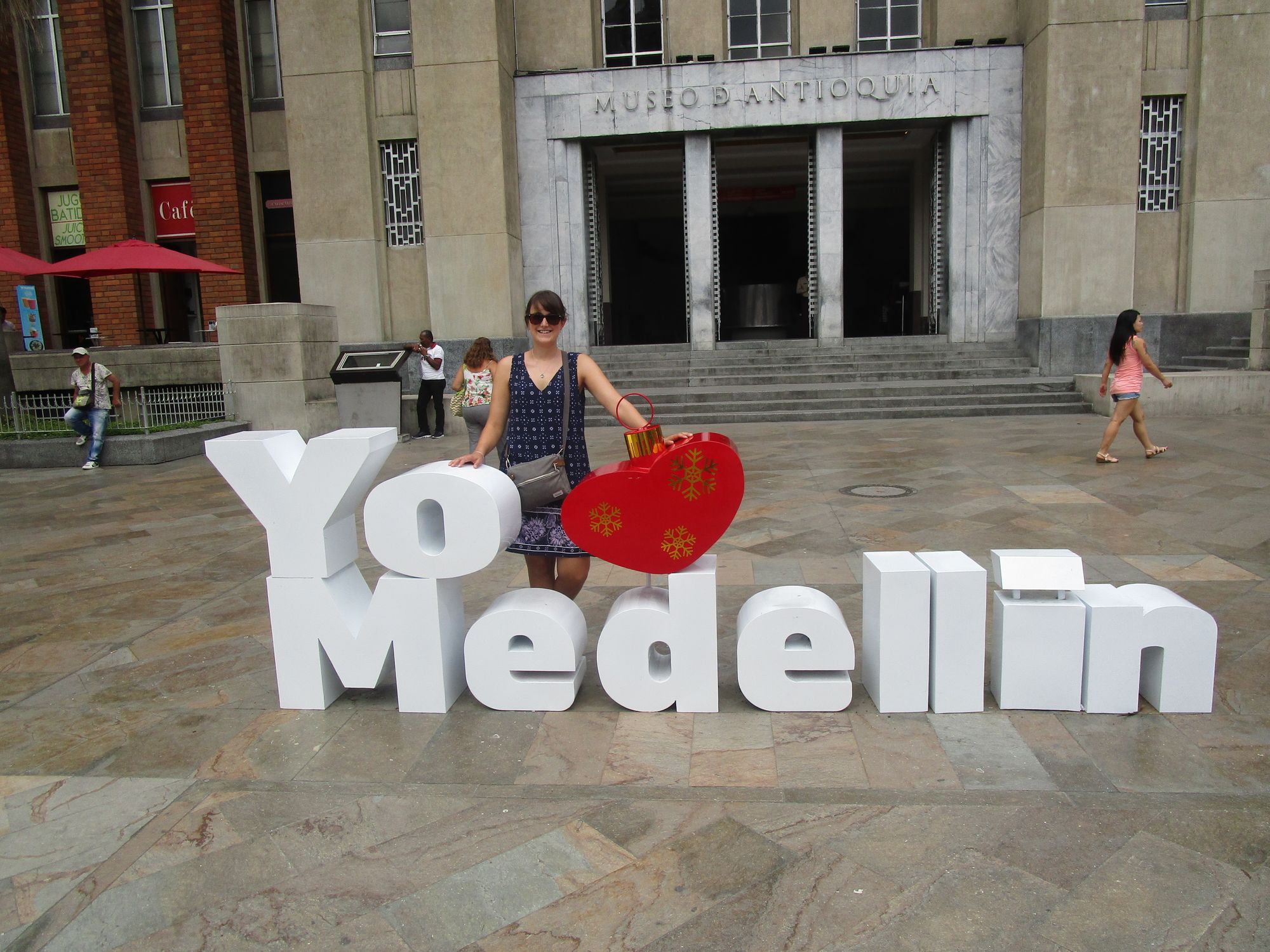
The most significant public artworks in central Medellín are not in Plaza Botero, but in the nearby Parque San Antonio. It was here in 1995 that a bomb was planted at the foot of Botero's sculpture 'The Bird', timed to detonate during a concert taking place in the park. The attack, claimed by FARC guerrillas, killed 30 people and injured more than 200.
In response, Botero donated a copy of the sculpture to the park, but insisted that the original, bomb-damaged bird remained in place. He renamed the pair 'The Birds of Peace', and these portly twins, one ripped open and peppered with shrapnel wounds, are a striking symbol of what Medellín has been through.
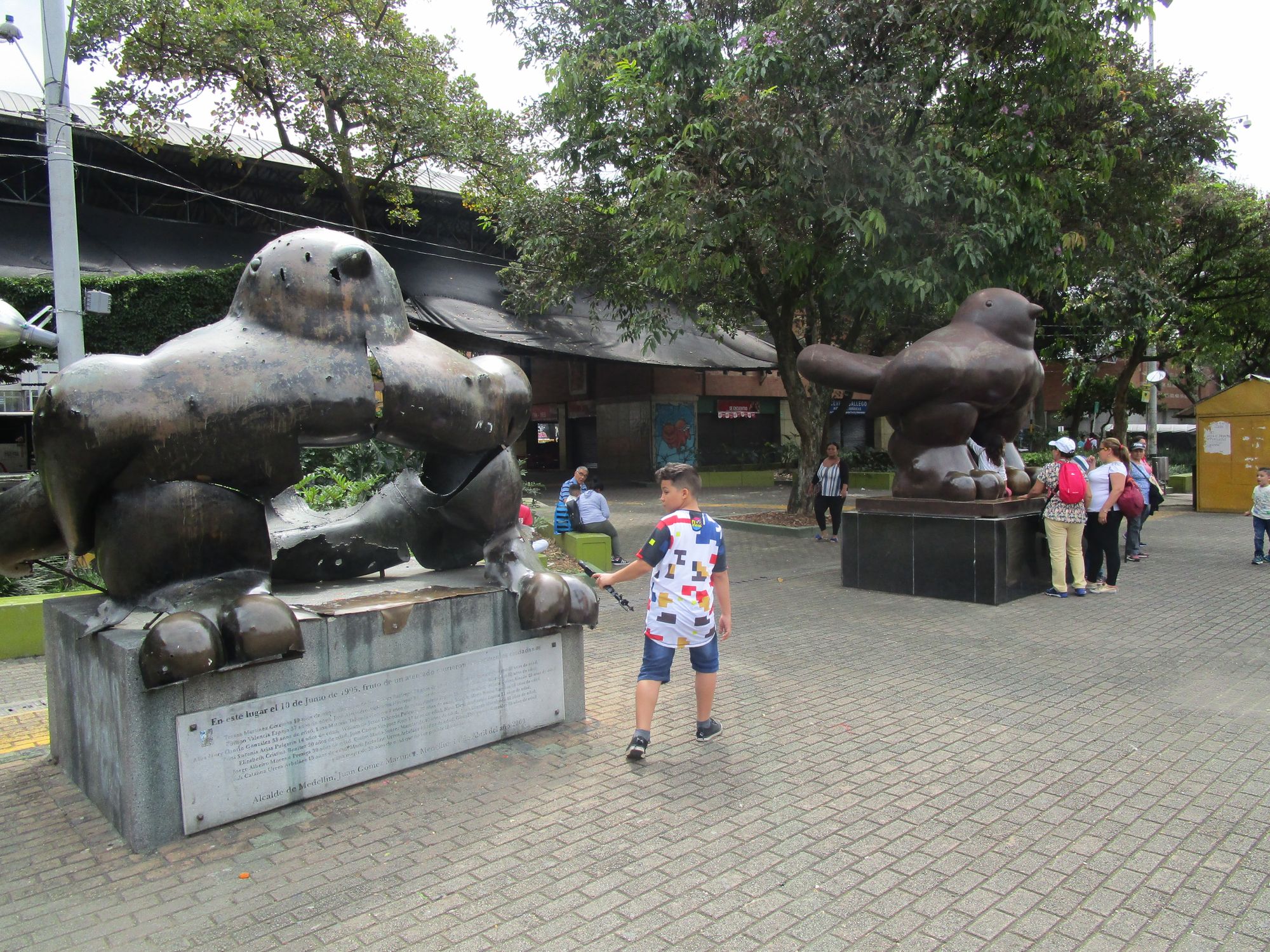
Guerrilla warfare, mass graves, bombed-out parks... I'm not doing a very good job of selling Medellín as a tourist destination. But it's a must-visit for anyone who's interested in Colombia's troubled history, and a fascinating, work-in-progress example of post-conflict regeneration.
The city also lies at the heart of Antioquia, a beautiful region full of pretty little towns that feel a world away from the grit and grime of Medellín. We decided to take a break from the urban sprawl and caught a bus to Guatapé, about two hours to the east. We hopped out of the bus just outside the town, at the bottom of a trail that leads to the hulking granite outcrop known as El Peñon de Guatapé. This huge lump of rock dominates the landscape, and we joined the Sunday crowds making the sweaty ascent up the 659 steps to the top.
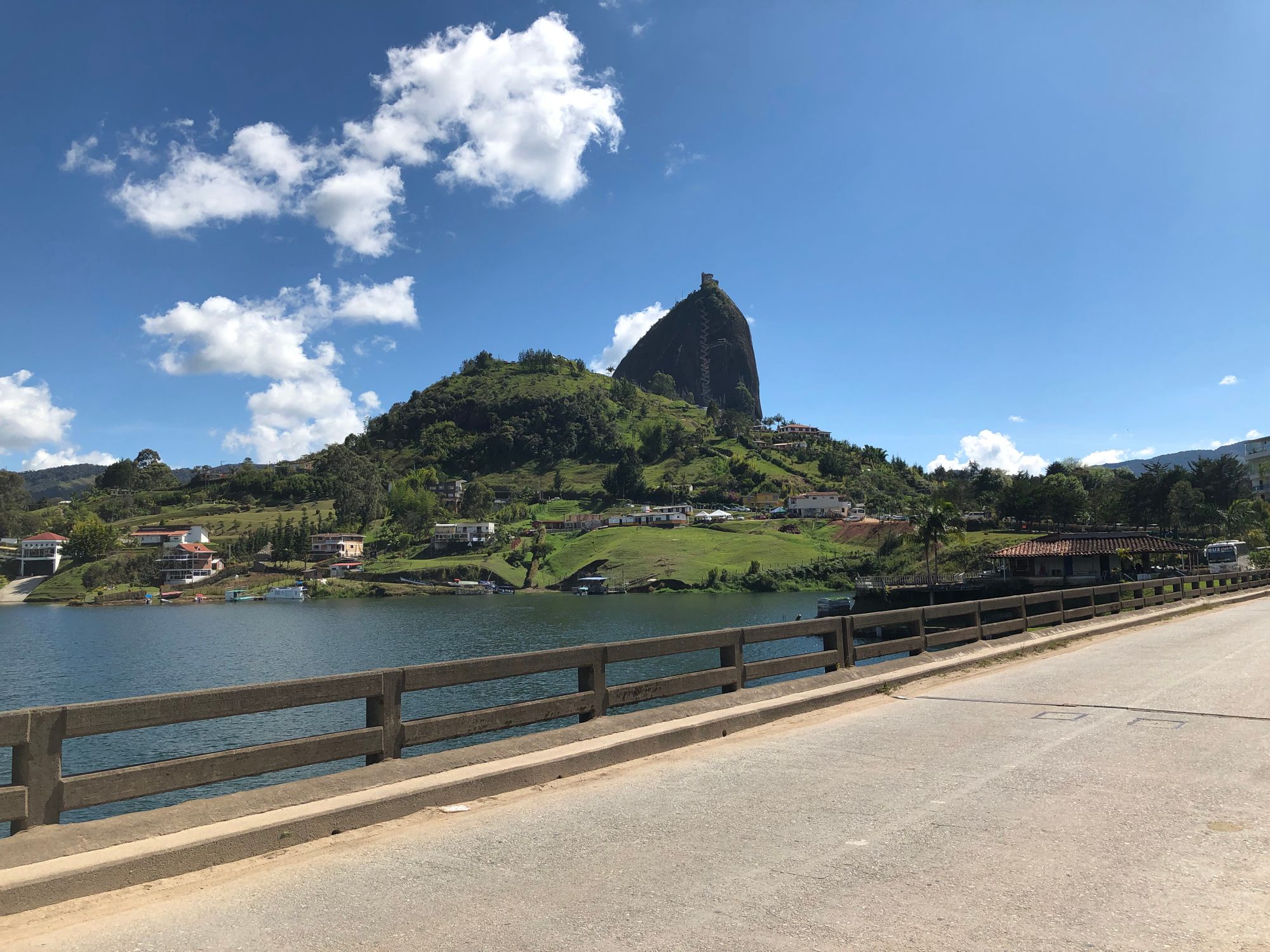
From the summit we had a panoramic view of the surrounding countryside, marbled with lakes and islands created when the area was flooded in the 1960s by a hydroelectric dam. We cooled off with a beer and tried a popular Colombian refreshment: slices of unripe mango sprinkled with salt and lime juice, much nicer than it sounds!
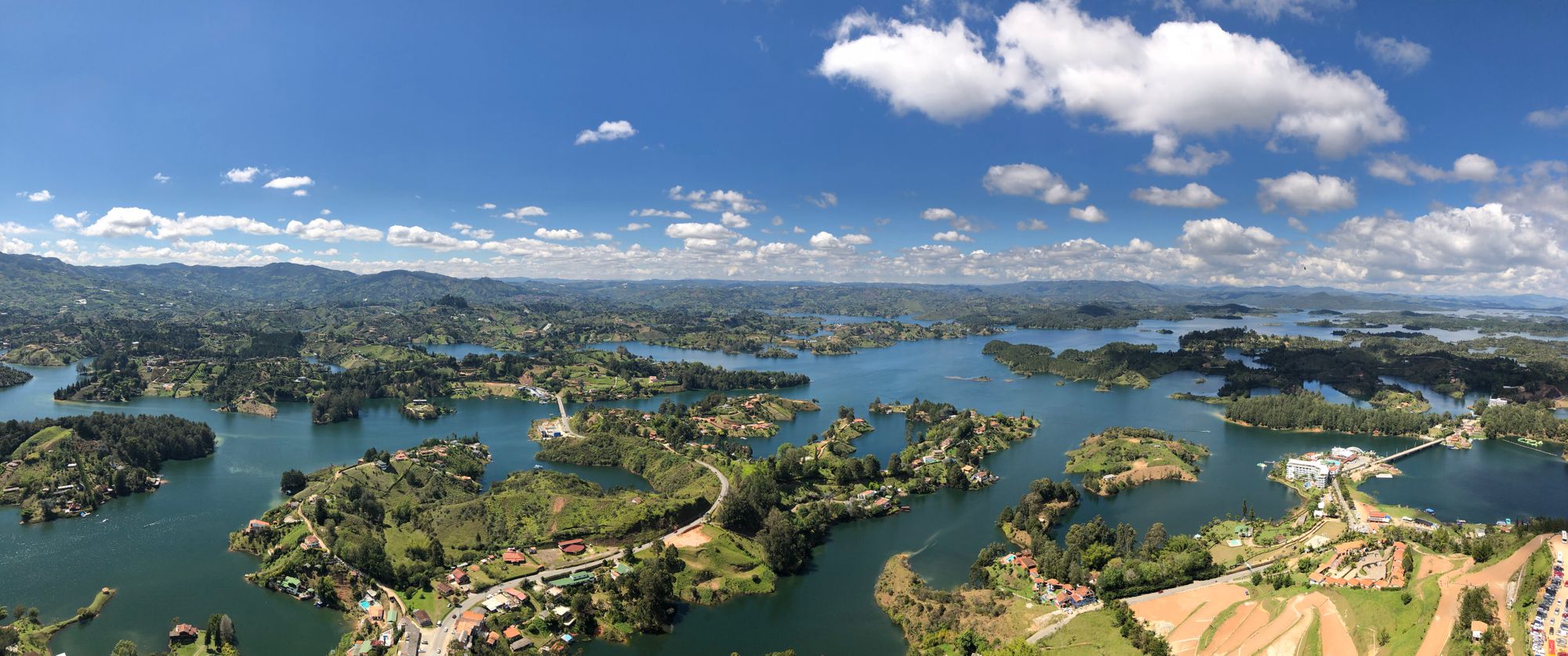
Back down at ground level we hopped in a tuktuk, which took us into Guatapé itself, dropping us off just around the corner from the main square. I thought Salento and Jardín would be hard to top when it came to quirky colonial architecture, but Guatapé turned the tropical technicolour up to eleven.
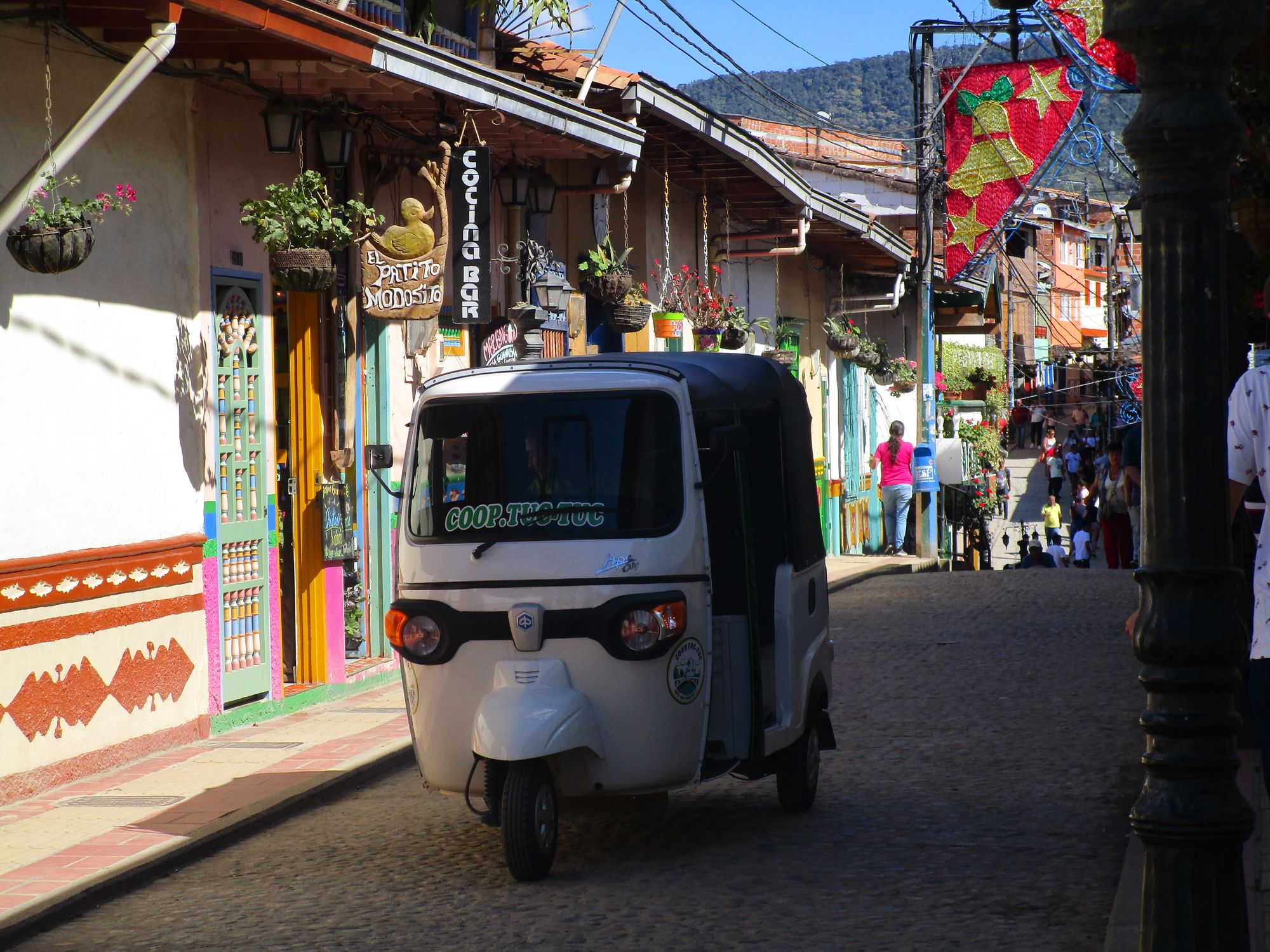
The houses painted in hot pink, lime green and neon orange were dazzling in the afternoon sun, and the Christmas decorations hanging overhead only added to the effect. The exterior walls of every building were panelled with zocalos, brightly painted bas-reliefs depicting everything from farm animals and flowers to tuktuks and electric guitars.
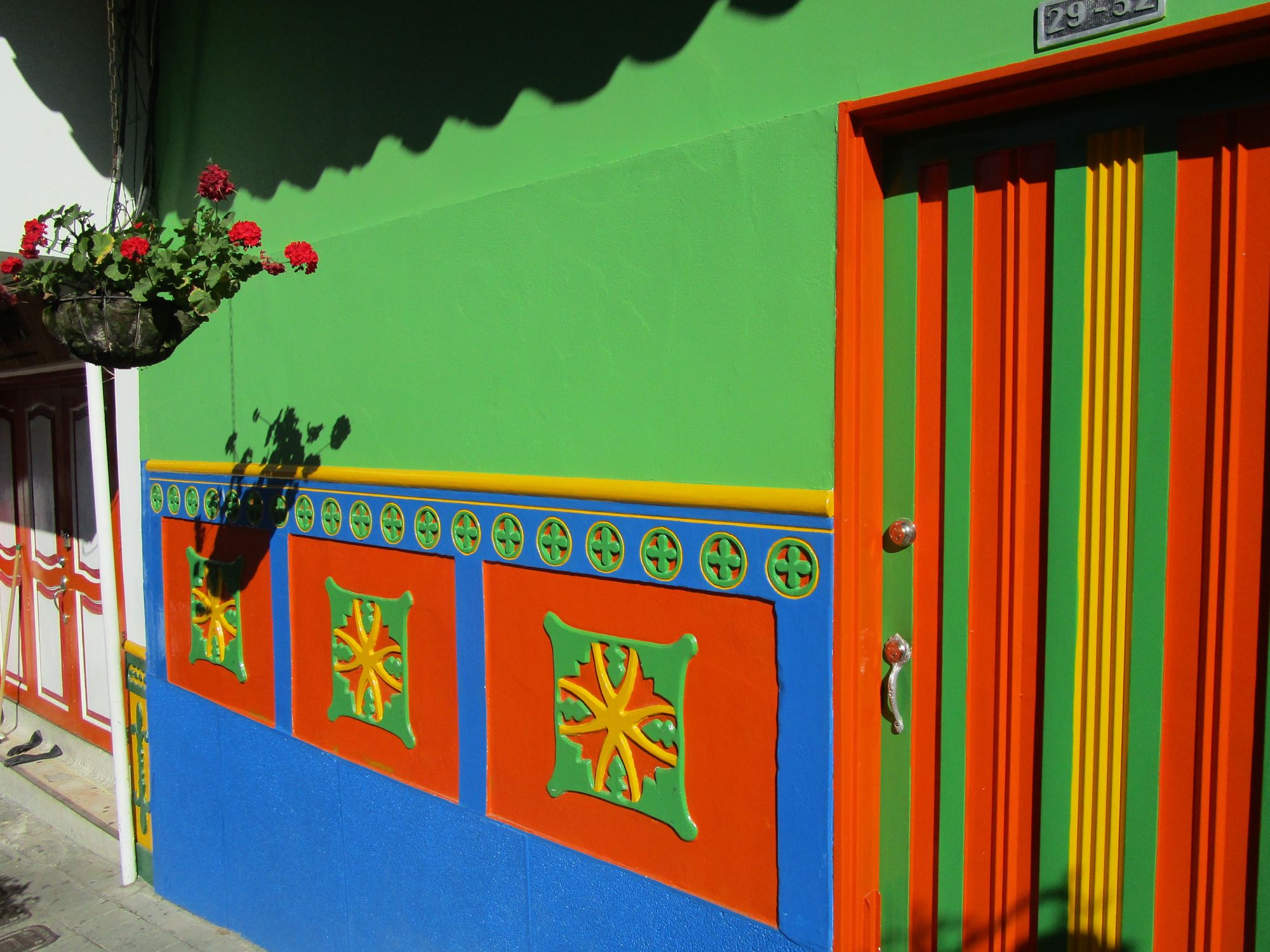
Originally our itinerary had included a couple of nights in Guatapé, but I was glad that we ended up just visiting as a day trip. Although the town is beautiful, there's not an awful lot to do, and within an hour or so we'd seen every street at least twice. We enjoyed a leisurely lunch and an ice cream, before making our way to the bus station for our journey back to Medellín.
By the time we'd reached the outskirts of the city the painted houses of Guatapé already seemed like just a psychedelic daydream, a million miles away from the ramshackle red brick barrios clinging to the hillsides.

